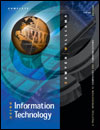 |  Using Information Technology: A Practical Introduction to Computers and Communications, 5/e Brian K. Williams
Stacey Sawyer
SYSTEM SOFTWARE: The Power behind the Power
Web Summary- The Components of System Software. Three basic components of system
software are operating systems, device drivers, and utility programs. An operating
system is the principal component of system software. Device drivers allow
input/output devices to communicate with the rest of the computer system.
Utility programs provide functions (such as data recovery) not supplied by
other system software.
- The Operating System: What It Does. The operating system
(OS) consists of the master system of programs that manage the basic operations
of the computer. Features of the OS are booting, CPU management, file
management, task management, and formatting. (1) In booting, the OS is loaded
into the computer's main memory. (2) The supervisor or kernel manages the
CPU. The OS also manages memory, by partitioning, dividing memory into foreground/background
areas, and arranging programs in queues to be processed. (3) In file management,
the OS records the storage location of files. (4) Task management includes
multitasking, executing more than one program concurrently; multiprogramming,
concurrent execution of different users' programs; time sharing, round-robin
processing of programs of several users; and multiprocessing, simultaneous
processing of two or more programs by multiple computers. (5) Formatting,
or initializing, consists of preparing a disk to store data or programs.
- Other System Software:Device Drivers & Utility Programs.
Device drivers are specialized software programs that allow input and
output devices to communicate with the rest of the computer system. Utility programs perform tasks related to the control and allocation of computer
resources. They enhance existing functions or provide services not supplied
by other system software programs. Tasks performed by utilities include the
following. (1) A backup utility is used to make a duplicate copy of
the information on your hard disk. (2) A data-recovery utility is used
to restore data that has been physically damaged or corrupted. (3) Antivirus software is a utility program that scans hard disks, floppy disks, and
memory to detect viruses. (4) Data compression utilities remove redundant
elements, gaps, and unnecessary data from a computer's storage space so that
less space (fewer bits) is required to store or transmit data. (5) Fragmentation
is the scattering of portions of files about the disk in nonadjacent areas,
thus greatly slowing access to the files. A defragmenter utility program
will find all the scattered files on your hard disk and reorganize them as
contiguous files.
-
Common Operating Systems. There are three categories of platforms, or particular
combinations of processors and OSs-for desktops/laptops, for networks, and for
handhelds.
Principal desktop/laptop OSs are DOS, Macintosh OS, and the Microsoft Windows
series. DOS was Microsoft's original OS. The Macintosh operating system runs only on Apple Macintoshes. Microsoft Windows 95/98
and most recently Me is the most popular OS for desktops and portables.
The recently-released Microsoft XP targets home users; XP is based
on Windows Me and Windows 2000. Principal network server OSs are NetWare from Novell; Windows NT and its successor Windows 2000 from Microsoft; Unix, available
in several versions, including Sun's Solaris and BSD; and Linux,
a free version of Unix and a kind of open-source software modifiable
by anyone. Principal OSs for handhelds are Palm OS, which runs the Palm and
the Visor, and Windows CE (a slimmed-down version of Windows 95),
which became Pocket PC, a simpler version.
- The OS of the Future: "The Network Is the Computer." The
concept has been put forth of an "operating system" that extends
over all kinds of networks. Three expressions of a possible Internet-wide
operating system are as follows: (1) Microsoft.Net is Microsoft's platform
for an operating system for the entire Internet, designed to link unrelated
Web sites so that people can organize all the information in their lives,
using PCs and smaller devices, such as cellphones, handheld computers, and
set-top boxes. Underlying .Net is a commitment to XML (for extensible markup
language), an "open standards" protocol that makes it easy for machines
to read Web sites by enabling Web developers to add more "tags"
to a Web page. (2) E-speak is Hewlett-Packard's version of an Internet
operating system, or "universal language," that allows different
Web sites to communicate with one another. E-speak also uses the programming
standard XML. (3) Sun's Jini is a small layer of software designed to let
all types of electronic gadgets on a wired or wireless network communicate
with each other. Jini builds on another Sun technology called Java.
The opposite possibility is that no one company's operating system will
dominate. Rather, there might be "massively distributed computing."
A distributed system is a noncentralized network of several computers
and other devices that can communicate with one another. Instead of an increasingly
Webcentric model, computing might become -decentralized, with information
distributed among millions of computers.
- Online Software & Application Software Providers.Application
service providers (ASPs) are firms that lease software over the Internet.
ASPs fit the strategy of users of network computers -- thin clients,
or inexpensive, stripped-down computers that connect to networks and run applications
tied to servers. ASPs were anticipated by enterprise resource planning software (ERP), which consists of large client/server software applications
that help companies organize and operate their businesses. With ASPs, however,
clients can rent instead of buy software to run off of servers.
|
|




 2002 McGraw-Hill Higher Education
2002 McGraw-Hill Higher Education